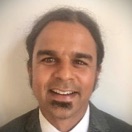Reimagining Approaches to Care for the Entire Population
- Integrate services that drive health and well-being. (Abramson, Backus, Birch, Chomilo, Cohen, Conway, Ferris, Fogel, Halfon, Hameed, Ibarra, Kligler, Walker)
- Extend domains of care to encompass communities. (Abramson, Alley, Brower, Erickson, Gupta, Halfon, Hameed, Ibarra, Pegus)
- Invest in health care and social supports for infants and children to address health disparities that occur early in life. (Briscoe, Halfon, Walker)
- Engage in effective life-stage care strategies. (Berwick, Birch, Halfon, Ibarra)
- Provide high-quality care to older adults and individuals with disabilities. (Lewis)
- Expand the use of home- and community-based services. (Berwick, Lewis, Halfon)
- Make full use of telehealth, virtual health, and other technologies. (Alley, Cohen, Lee, Lewis)

“We’re looking at taking a different approach to advancing health equity and addressing structural racism. We’re looking at models that we could pursue to address these issues as part of our mandate to improve quality.”
Elizabeth Fowler, Center for Medicare & Medicaid Innovation

“The role of the health care system is to empower the person: to have the conversation about what’s important to that person, and then to build out that conversation into, 'what kind of skills, or assistance, or tools do you need to move yourself toward what’s important to you?'”
Benjamin Kligler, Veterans Health Administration





